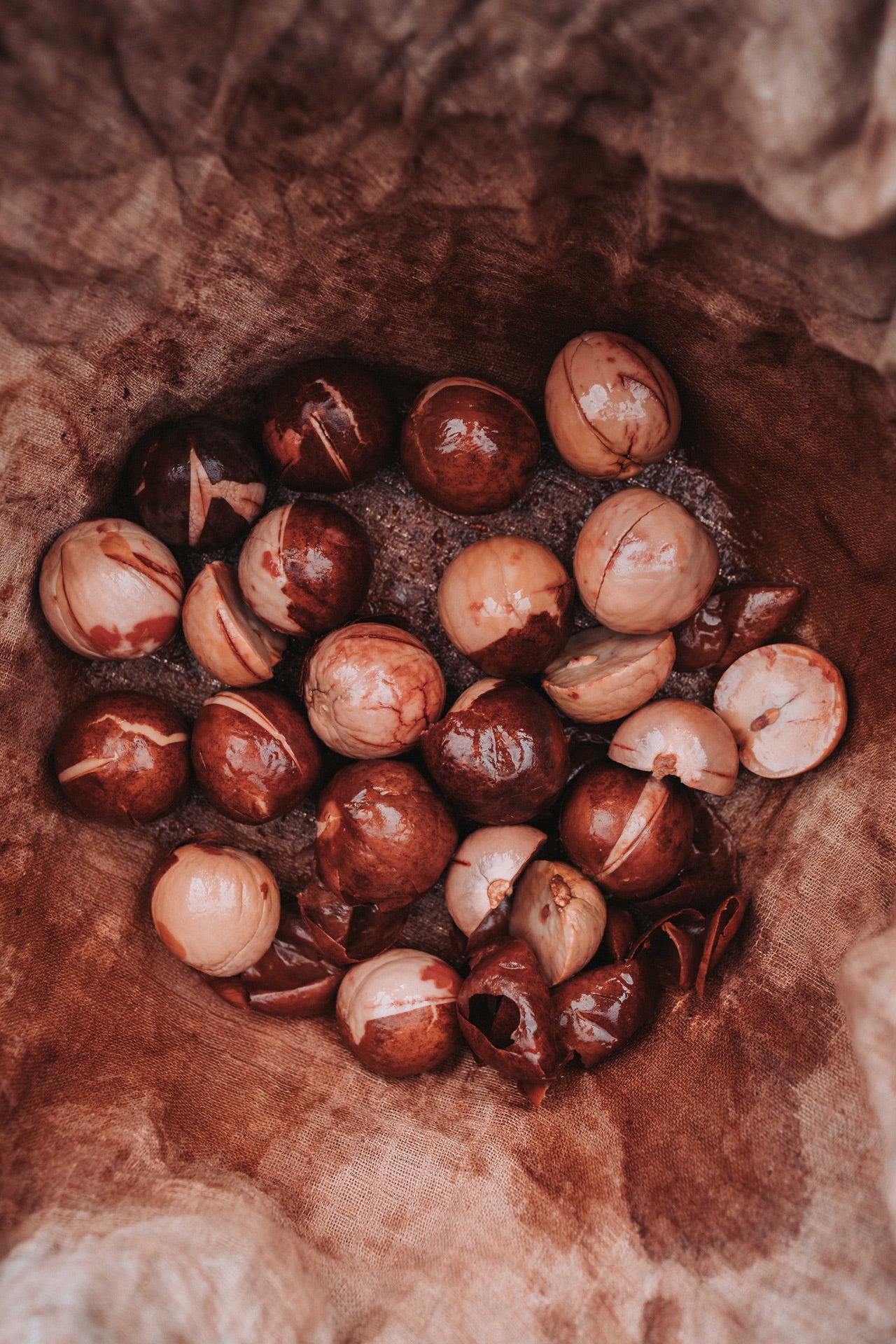Natural plant dyes
At Cosmaki, we work exclusively with natural dyes made from plants and food waste. Our colors come directly from nature—from avocado seeds, onion skins, pomegranate peels, tea, or traditional dye plants like indigo.
Unlike synthetic dyes, our natural dyes gain character and depth over time. They retain their vibrancy but develop a pleasant patina, becoming more authentic with each wear and wash. The natural pigments bond permanently with the fiber, creating consistent, vibrant shades that tell their own story. Each dyed textile is unique—with a depth of color and naturalness that synthetic dyes cannot achieve.
The vibrancy of natural colors
Unlike industrial dyeing processes, our natural dyes change and evolve—they react to sunlight, water, and use. This natural vibrancy makes each piece unique and personal.










